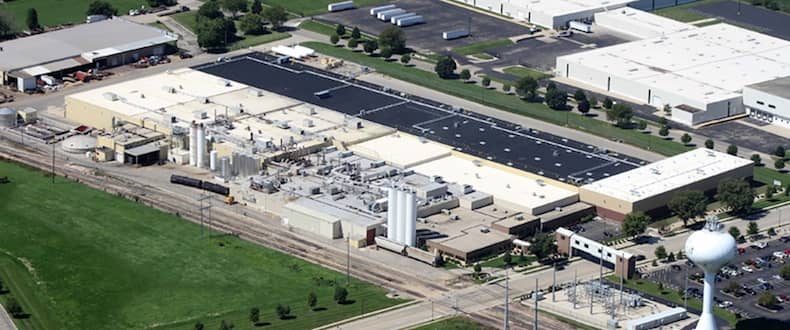With so many roofing solutions on the market promising the same results, it can be hard to make a well-informed decision regarding your specific roofing needs. Products like ELVALOY™ Ketone Ethylene Ester (KEE) and Ethylene Propylene Diene Terpolymer (EPDM), although viable options, have very different durability standards, installation processes and life cycles. It’s important to keep the following distinctions in mind when considering a ELVALOY™ KEE or EPDM product for your next roofing project.
ELVALOY™ KEE
How ELVALOY™ KEE Impacts Waterproofing
ELVALOY™ KEE roofing membranes are sealed using a monolithic welding process in which the seams are bonded together. As a result, the roof becomes a unique combination of high-quality fabric and, at minimum, 50 percent ELVALOY™ KEE terpolymer waterproofing compound. This creates a stable roof system that’s resistant to shrinking. ELVALOY™ KEE’s intensive formation process gives the membrane a proven lifecycle of 30-plus years with little to no maintenance or upkeep required.
Durability and Resistance
ELVALOY™ KEE roofing membranes are very difficult to puncture or tear because they are comprised of heavy, high-density polyester fabric. This UV-resistant, welded material can withstand outside elements such as oil, grease and chemicals that can eat away at most roofing materials over time.
Cost
ELVALOY™ KEE’s life cycle of 30-plus years proves that the initial cost of installation is not the only factor one must consider when selecting a roofing system. Generally, the life cycle cost of a ELVALOY™ KEE roofing system will be less than the cost of other options due to the fact that ELVALOY™ KEE systems require much less maintenance and upkeep over the lifespan of the product. Since ELVALOY™ KEE is a heat weldable membrane, patches or flashings for new mechanical equipment are welded and don’t rely on tapes and glues like EPDM. Even the best installed EPDM patches will require monitoring of the seam sealants.
EPDM
How It’s Installed
An EPDM roofing membrane is sealed by gluing or taping seams together. EPDM is known for its stretch characteristics, but that is often due to its lack of reinforcement. The EPDM roofing membrane is exceptionally thick and well-suited for waterproofing a variety of surfaces.
Durability and Resistance
Depending on environmental factors, EPDM material can shrink up to 2 percent over time. EPDM roofing membranes can withstand general applications that don’t involve the exhausting of chemicals or greases onto the rooftop. The material can also handle most water conditions, however, once damaged it’s difficult to make repairs and/or keep the seams together. EPDM roofing material has inherently UV resistance due to its carbon black makeup, but it’s also a fairly combustible product.
Cost
Repair materials and services are readily available for EPDM roofing systems, but they’re not considered permanent fixes, only temporary repairs. An EPDM product may or may not be initially less expensive than a ELVALOY™ KEE product, but it’s not necessarily as cost effective when compared to the increased life cycle promise of a ELVALOY™ KEE product.
There are many factors to consider when determining which roofing solution is best suited for your project. Materials, durability and cost are just a few of the components that should be taken into consideration during your decision-making process.
What other factors do you consider when choosing a roofing system? Share your thoughts in the comments.
ELVALOY™ is a trademark of The Dow Chemical Company (“Dow”) or an affiliated company of Dow.
-1.png?width=500&height=271&name=FiberTite_Only%20(500px%20wide)-1.png)



-1.png)